
On the night after most North American and European children dress up and venture from house to house asking for candy, people throughout the Andes Mountains celebrate in a different way: by staying up all night in cemeteries, eating, drinking and partying with their dead loved ones.
For traditional Catholics, the day after Halloween is a celebration of All Saints Day. On this day, the faithful pray for all of the saints who lived and to those who have been forgotten by time. But, like many rituals in the Andean region, this religious ceremony has taken an identity of its own, and blends Catholic beliefs with pre-Columbian traditions.
As is often the case in Peru, the mixing ground for these traditions has been the neighborhoods on the outskirts of Lima, where generation after generation of Andean immigrants arrived in the capital city during the second half of the last century.
In Peru the first day of November is now a day when certain families go to graveyards to connect with their ancestors. People come from every corner of Peru to offer food and music and some even spend the night in hope of keeping the memory of their loved ones alive.
In Lima, the Day of the Dead spectacle takes over local cemeteries. The Cementerio de Nueva Esperanza, one of the largest cemeteries in the world, located in the Villa Maria del Triunfo district, is transformed into a party atmosphere akin to a street festival.
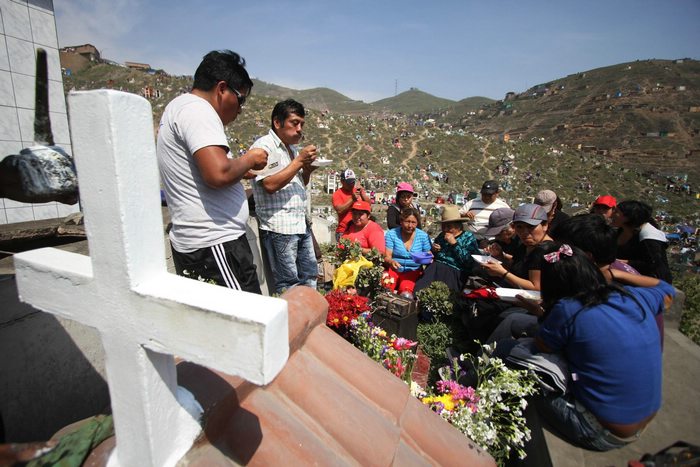
A family eating lunch at a grave site on the Peruvian Day of the Dead.
Photo by Marco Del Rio/ Andina
As the sun goes down at the Nueva Esperanza cemetery, artists from a local collective carry an altar of the Santa Muerte, the female folk saint of death. Flowers escort the sculpture of the skeleton lady; crowds throw incense and light candles as she passes through the cemetery. Musicians play lively tunes on Andean pan flutes; vendors selling everything from flowers to friend pork sandwiches to “chicha de jora” line the parking lot of the cemetery; and family members drink liquor openly, offering their dead family members their due portion.
Lima Tours:
The cemetery in Maria de Triunfo isn’t the only one in the city that honors the dead, Las Malvinas in Carayballo, Luz Eterna en Collique, and Cristo El Salvador in Villa el Salvador, are also used by the waves of immigrants who came to Lima throughout the 20th Century.
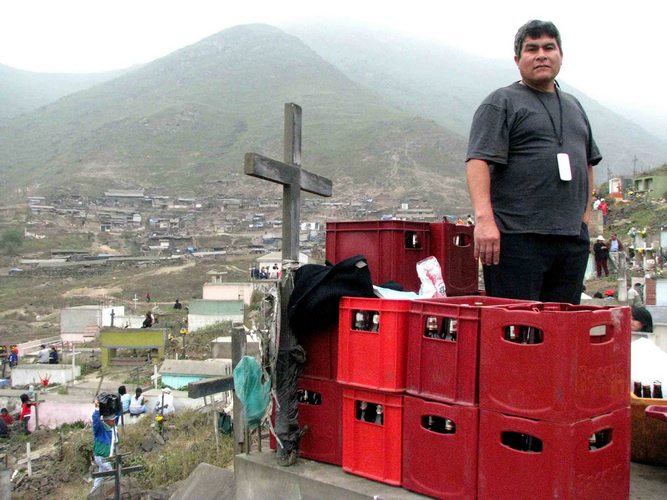
A man selling cases of beer for the celebration at the Nueva Esperanza Cemetery in Lima .
Photo by Omar Alva Castillo/ Flickr
In Bolivia, the dead are honored in a different, slightly more macabre fashion. Their celebration more closely resembles the Inca customs in which they used to honor their ancestors by displaying their mummies in prominent place and sharing meals and drinks with them. However, in Bolivia a peculiar religious festival known as the “Fiestas de las Ñatitas” celebrates only the skulls of deceased family members.
Every year at the break of dawn on November 9, those who still follow this custom take the skulls of their ancestors, late relatives and friends, wrap them in plastic bags and take them to the main cemetery in La Paz. The skulls are decorated with flowers, coca leaves and candles. The observers of this tradition believe that the skulls of the dead will protect the living and bring them luck.
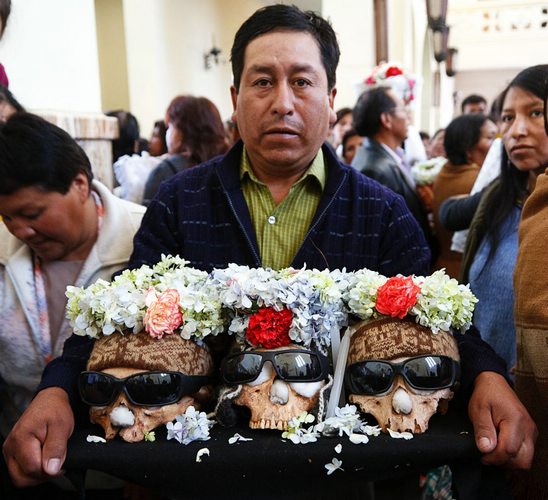
Skulls are often adorned with sunglasses, flowers and cigarettes.
Photo by Szymon Kochanski/ Flickr
Many believers even bring precise wishes and hopes forth to the skulls. Some ask for help finding missing relatives or stolen property, others ask for a happy marriage and future success.
While the practice of asking for candy door to door on Halloween night is becoming more common across Peru and Bolivia, the unique mix of Catholic and traditional Andean worship continues to shape the lives of many in this numinous region.
Honoring the dead is a tradition that most cultures have practiced for thousands of years. In the Andes, many of those traditions are still alive today.
Experience the unique cultural practices of Latin America. Contact us for a customized itinerary.

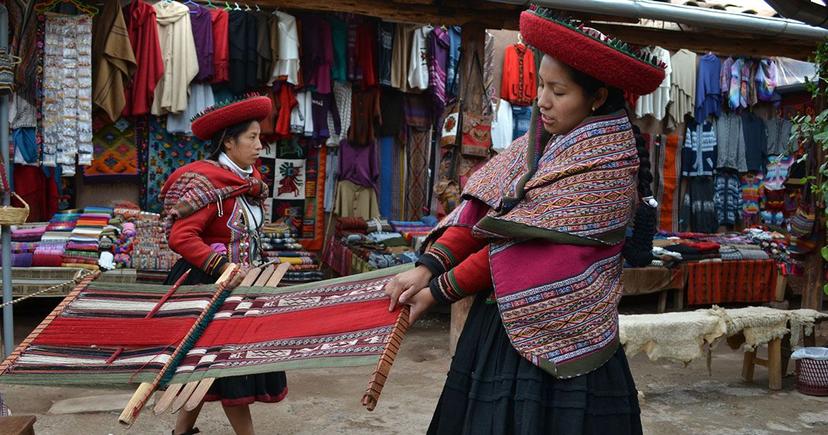
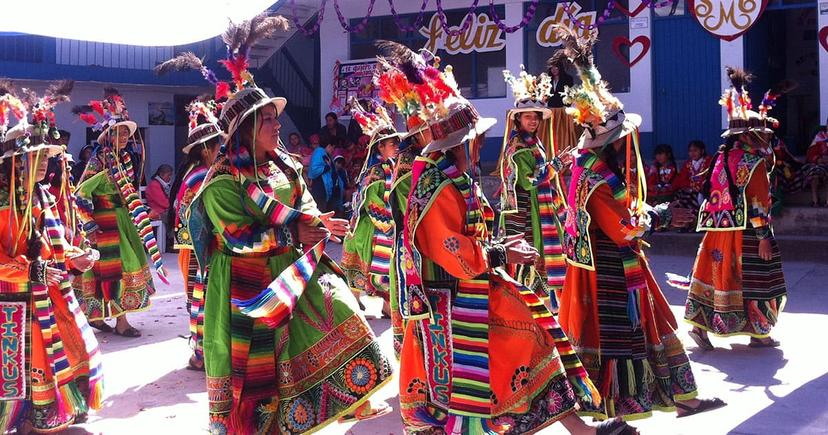
Email: [email protected]
Sign up to receive our newsletter for great articles, stunning photos, and special deals.